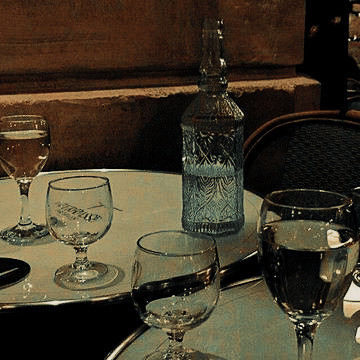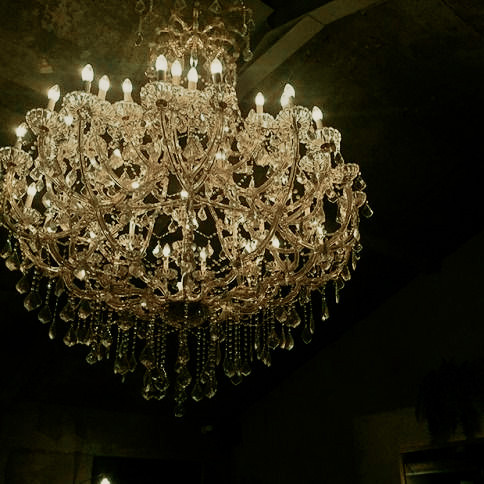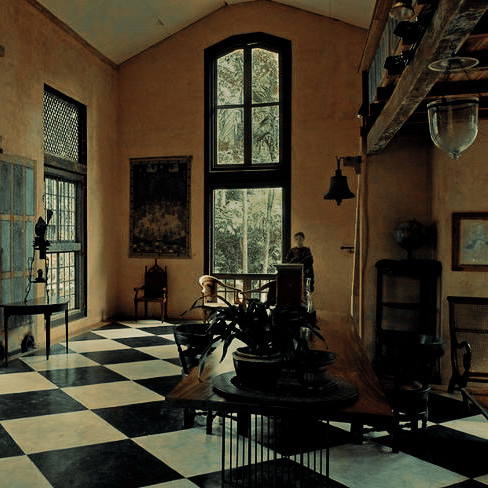Academic Writing Advice Inspired By Umberto Eco’s ‘How To Write A Thesis’:
Academic writing advice inspired by Umberto Eco’s ‘How to Write a Thesis’:
Planning
Determine primary sources/bibliography.
Determine secondary sources/bibliography.
Find title.
Brainstorm a table of contents with as much detail as possible (with chapters, sections and even paragraphs and sub-paragraphs - see How to Write a Thesis’ own table of contents as an example at the end of this document) (if the first drafted table of contents is good enough, it will not be necessary to start the writing from the beginning).
Do a first draft of the introduction.
Note-taking and research
Use Google Scholar to make sure you do not miss important sources.
Keep the table of contents in mind when researching and take notes of which sources could go where.
While note-taking, differentiate which parts could be used as quotations from the ones that are simply important for the argument.
Eco underlines the importance of what he calls reading sheets, which can be understood as your notes on your readings. According to him, these should contain:
information about the author if he is not a well-known figure;
a brief (or long) summary;
they should mostly consist of quotations (accompanied by all the corresponding page numbers)
any commentaries you might want to add;
an indication of which part (or parts) of your table of contents the information mentioned belongs to.
Keep reading sheets on primary sources (which should be the longest) separate from those on secondary sources (which should only be 1-2 pages long).
In the end, re-read the notes and color-code all the different parts according to where they would fit in your table of contents.
Writing and editing
A good place to start would be by redrafting the introduction.
Define every key/technical term used/mentioned unless indisputably obvious.
General writing tips:
keep sentences short;
do not be afraid to repeat the subject twice (ex: Roberta went to the shop (…) Roberta bought carrots and tomatoes);
avoid excessive details;
avoid subordinate clauses (orações subordinadas);
avoid vague language;
avoid unnecessary adjectives;
avoid the passive voice.
While drafting, write everything that comes to mind. Leave the editing for the end.
Use your tutor as a Guinea pig. Make them read your first chapters (and, progressively, all the rest) well before delivery is due.
Ask for as much feedback as possible. Ask colleagues, friends and/or family to read your work. They will provide you with more diversified feedback, as well as allowing you to know if your writing is clear to anyone.
Stop playing ‘solitary genius’.
Don’t insist on starting with the first chapter. Start with what you know best and feel more comfortable writing about, then fill in the gaps.
Leave time for editing and try to take at least a one or two days long break in between writing and editing.
Do not forget to fill in the gaps. When you revisit your writing, go through it with all these writing tips in mind as well as a conscience of what your most common mistakes are.
Use Hemingway in the final editing phase.
Quotations and footnotes
Since there are two kinds of sources (primary and secondary), there are also two kinds of quotations: either we quote a text which we will interpret, or we quote a text which supports your interpretation.
Some quotation rules to know:
“Quote the object of your interpretive analysis with reasonable abundance.”
“Quote the critical literature only when its authority corroborates or confirms your statements. (…) when quoting or citing critical [aka secondary] literature, be sure that it says something new, or that it confirms authoritatively what you have said.”
“If you don’t want readers to presume that you share the opinion of the quoted author, you must include your own critical remarks before or after the passage.”
“Make sure that the author and the source of your quote are clearly identifiable.”
“When a quote does not exceed two or three lines, you can insert it into the body of the text enclosed in quotation marks. (…) When the quote is longer, it is better to set it off as a block quotation. In this case the quotation marks are not necessary, because it is clear that all set-off passages are quotes, and we must commit to a different system for our observations. (Any secondary developments [like the quote’s reference] should appear in a note.) (…) This method is quite convenient because it immediately reveals the quoted texts; it allows the reader to skip them if he is skimming, to linger if he is more interested in the quoted texts than in our commentary, and finally, to find them immediately when need be.”
Some footnote rules to know:
“Use notes to add additional supporting bibliographical references on a topic you discuss in the text. For example, ‘on this topic see also so-and-so.’”
“Use notes to introduce a supporting quote that would have interrupted the text. If you make a statement in the text and then continue directly to the next statement for fluidity, a superscript note reference after the first statement can refer the reader to a note in which a well-known authority backs up your assertion.”
“Use notes to expand on statements you have made in the text. Use notes to free your text from observations that, however important, are peripheral to your argument or do nothing more than repeat from a different point of view what you have essentially already said.”
“Use notes to correct statements in the text. You may be sure of your statements, but you should also be conscious that someone may disagree, or you may believe that, from a certain point of view, it would be possible to object to your statement. Inserting a partially restrictive note will then prove not only your academic honesty but also your critical spirit.”
“Use notes to provide a translation of a quote, or to provide the quote in the original language.”
More Posts from Ieatstories and Others
“You will not always be the smartest person in the room, and you will not always be the strongest or the funniest or the most talented. But you can always be brave and you can always be kind, and these are the things you should be every minute of every day for the rest of your life. Because yes, those other things, they’re great things. But these things are better.”
—
My Biggest and Most Annoying Fictional Horse Pet Peeve
Big Horses are a Very New Thing and they Likely Didn’t Exist in your Historical and/or Fantasy Settings.
You’ve all seen it in every historical piece of media ever produced. Contrary to popular belief, a big black horse with long legs and long flowing mane is not a widespread or even a particularly old type of horse.

THIS IS NOT A MEDIEVAL THING. THIS IS NOT EVEN A BAROQUE THING. THIS IS A NINETEENTH CENTURY CITY CARRIAGE HORSE.
All the love to fancy Friesian horses, but your Roman general or Medieval country heroine just really couldn’t, wouldn’t, and for the sake of my mental health shouldn’t have ridden one either.
Big warmblood horses are a Western European and British invention that started popping up somewhere around 1700s when agriculture and warfare changed, and when rich folks wanted Bigger Faster Stronger Thinner race horses. The modern warmblood and the big continental draught both had their first real rise to fame in the 1800s when people started driving Fancy Carriages everywhere, and having the Fanciest Carriage started to mean having the Tallest and Thinnest Horses in the town.
Before mechanised weaponry and heavy artillery all horses used to be small and hardy easy-feeders. Kinda like a donkey but easier to steer and with a back that’s not as nasty and straight to sit on.
SOME REAL MEDIEVAL, ROMAN, OTTOMAN, MONGOL, VIKING, GREEK and WHATEVER HISTORICALLY PLAUSIBLE HORSES FOR YOU:
“Primitive”, native breeds all over the globe tend to be only roughly 120-140 cm (12.0 - 13.3 hh) tall at the withers. They all also look a little something like this:
Mongolian native horse (Around 120-130 at the withers, and decendants of the first ever domesticated horses from central Asia. Still virtually unchanged from Chinggis Khan’s cavalry, ancestor to many Chinese, Japanese and Indian horses, and bred for speed racing and surviving outdoors without the help of humans.)

Carpathian native horse / Romanian and Polish Hucul Pony (Around 120-150 at the withers, first mentioned in writing during the 400s as wild mountain ponies, depicted before that in Trajanian Roman sculptures, used by the Austro-Hungarian cavalry in the 19th century)

Middle-Eastern native horse / Caspian Pony (Around 100-130 at the withers, ancestor of the Iranian Asil horse and its decendants, including the famous Arabian and Barb horses, likely been around since Darius I the Great, 5th century BC, and old Persian kings are often depicted riding these midgets)

Baltic Sea native horse / Icelandic, Finnish, Estonian, Gotland and Nordland horses (Around 120-150 at the withers, descendant of Mongolian horses, used by viking traders in 700-900 AD and taken to Iceland. Later used by the Swedish cavalry in the 30 years war and by the Finnish army in the Second World War, nowadays harness racing and draught horses)

Siberian native horse / Yakutian pony (Around 120-140 at the withers, related to Baltic and Mongolian horses and at least as old, as well-adapted to Siberian climate as woolly mammoths once were, the hairiest horse there is, used in draught work and herding)

Mediterranean native horse / Skyros pony, Sardinian Giara, Monterufolino (Around 100-140 at the Withers, used and bred by ancient Greeks for cavalry use, influenced by African and Eastern breeds, further had its own influence on Celtic breeds via Roman Empire, still used by park ranger officers in Italy)

British Isles’ native horse / various “Mountain & Moorland” pony breeds (Around 100-150 at the withers, brought over and mixed by Celts, Romans and Vikings, base for almost every modern sport pony and the deserving main pony of all your British Medieval settings. Some populations still live as feral herds in the British countryside, used as war mounts, draught horses, mine pit ponies, hunting help and race horses)

So hey, now you know!
longing for a touch, longing to be held in someone's arms, without a rush, without time and space between you two
what is it if not the greatest pleasure and the most vicious curse of the human kind










south asian fitzwilliam darcy moodboard
"I cannot forget the follies and vices of others so soon as I ought, nor their offences against myself. My good opinion, once lost, is lost forever."
[ image ID in alt text ]
Two years ago I was swimming in the sea in Croatia and I had this thought. It was a very weird feeling, my head was completely clear, I wanted it and I knew that what I see in my head now, is my future. I saw it so clearly and I remember the moment like it was yesterday. Nowadays I'm working to that exact goal, the first part is already in motion, I see it happening, I believe it's happening. It is truly mind-blowing, how we can manipulate the world around us just by focusing our energy, having faith, praying (whatever it means to you) and by reaching a certain level of... vibration, if you wish.






the bisexual energy jumped out
Aesthetics is not pointless. Everything becomes bearable, even enjoyable, if you can look at the aesthetics behind it. Cultivate that magical power, you will become indestructible.
This energy is something that I want to cultivate in myself. I also deeply wish my future spouse is going to be like that.
I want them to be able to sit with our kid and do a math homework with them withou yelling and making them cry. Just calm, kind and patient people. I love them. They're the best.
that video of the guy trying to get his baby to drink orange juice and the baby spilling it all over and the man catching the juice box and inhaling and forcing himself to calm down and without raising his voice murmurs "I didn't foresee that, that was my fault" and his baby mindlessly keeps going without realizing it made a mess because his dad or uncle or whatever was so calm about it lives rent free in my head
I reblog this because I want to be able to find it later. I'm so stressed about the thesis and the deadline is so close and my prof is not communicating with me and everything is wrong. BUT I also feel really inspired today and am actually looking forward to write, so that's good I think.
wholesome student life things that we should collectively start romancizing
waking up and being genuinely thrilled to go to class because today is THAT CLASS you love so much you’d like it to never end
coffee breaks with friends, chatting and joking about this particularly hard essay and the prof’s mannerism
coffee breaks on your own, as you absent-mindedly watch the people around you, while thinking about what you’re working on
finding this book you’ve been dying to read for so long, and borrowing it from the library
the feeling of excitement that goes through you whenever you remember The Book is in your backpack
understanding everything during demanding classes and being genuinely interested in the subject
buying a New Special Pen and taking colorful notes that look super pretty
not being able to shut up about your school projects (no your friends dont really care about the intricate details of what you’re working on, they don’t even have the same major as you, but they’re happy to hear you rant with such a burning passion)
actually doing the extra reading and having your curiosity so piqued by what you’re reading that you go on and on and suddenly its 1am and what happened
printing the project you’ve spent so much time and energy on and feeling the paper’s warmth
actually submitting that project without feeling awful about it because you know you did your best and aren’t responsible for what happens next
when you finally finish this Super Hard And Important Essay at like 3am, open the window and feel the cold night air on your burning cheeks and everything is dark and quiet and you can see the moon and you’re at peace with everything for a few minutes
when this professor you admire says you did a great job and/or that you’re talented!!!!
realizing two concepts that seemed so far away from each other and that you discovered in wildly different contexts are actually interlinked, then Realizing™ things and linking concepts/works/articles to each other at the speed of light & being super excited about it
being so deeply immersed in your work that you didn’t realize two hours have passed
finding the Perfect Spot at the library
that Pure Joy moment when you FINALLY understand that super obscure sentence/text
when you feel anxious because you’re not done with your homework & the deadline is super tight & your friend tells you they aren’t done yet either
same but with an even more intense relief feeling when you realize you both haven’t even started yet
when the professor starts a new reasoning and you can predict what the next idea/the final conclusion will be
when the professor mention your favorite novel/author/fictional character in class and you feel like your internal screech of joy could shatter glass
the Academic Salt™ that has you like 👀👀
when the professor tears apart an author or scholar you hate and you’re like YES I WANT BLOOD GIVE ME BLOOD
when you learn that Cool New Fact that makes you reconsider your whole life
leaving the library after a long productive day and feeling like nothing is real but experiencing everything more intensely
leaving the library at night after a long study session and everybody has left already and its just you and the long neon-lit corridors then stepping outside and smelling the crisp night wind
feel free to add your own!!!
-
 h1019 liked this · 3 weeks ago
h1019 liked this · 3 weeks ago -
 curiousityanddespair liked this · 4 weeks ago
curiousityanddespair liked this · 4 weeks ago -
 memeyhell liked this · 1 month ago
memeyhell liked this · 1 month ago -
 donnamalfoy liked this · 1 month ago
donnamalfoy liked this · 1 month ago -
 emptyanddark reblogged this · 1 month ago
emptyanddark reblogged this · 1 month ago -
 monchampsdebataille reblogged this · 1 month ago
monchampsdebataille reblogged this · 1 month ago -
 aquaryears reblogged this · 2 months ago
aquaryears reblogged this · 2 months ago -
 deepspacememes liked this · 2 months ago
deepspacememes liked this · 2 months ago -
 annewithane1yep liked this · 4 months ago
annewithane1yep liked this · 4 months ago -
 thebardostate reblogged this · 5 months ago
thebardostate reblogged this · 5 months ago -
 lilystudying reblogged this · 6 months ago
lilystudying reblogged this · 6 months ago -
 godlike-art liked this · 6 months ago
godlike-art liked this · 6 months ago -
 ataraxy-s liked this · 8 months ago
ataraxy-s liked this · 8 months ago -
 likely-to-be-alive reblogged this · 8 months ago
likely-to-be-alive reblogged this · 8 months ago -
 likely-to-be-alive liked this · 8 months ago
likely-to-be-alive liked this · 8 months ago -
 anthrosugar reblogged this · 9 months ago
anthrosugar reblogged this · 9 months ago -
 beacherie reblogged this · 9 months ago
beacherie reblogged this · 9 months ago -
 havblaa liked this · 9 months ago
havblaa liked this · 9 months ago -
 la-reine-vampire liked this · 9 months ago
la-reine-vampire liked this · 9 months ago -
 uchihauahas liked this · 9 months ago
uchihauahas liked this · 9 months ago -
 pr-azarias liked this · 9 months ago
pr-azarias liked this · 9 months ago -
 tory-tae liked this · 1 year ago
tory-tae liked this · 1 year ago -
 luv4jeno reblogged this · 1 year ago
luv4jeno reblogged this · 1 year ago -
 fwrsaken liked this · 1 year ago
fwrsaken liked this · 1 year ago -
 changingpeacefully liked this · 1 year ago
changingpeacefully liked this · 1 year ago -
 angiestudy liked this · 1 year ago
angiestudy liked this · 1 year ago -
 09-05-02 liked this · 1 year ago
09-05-02 liked this · 1 year ago -
 blacklillithrising liked this · 1 year ago
blacklillithrising liked this · 1 year ago -
 sunnylittlegal liked this · 1 year ago
sunnylittlegal liked this · 1 year ago -
 beauteaful reblogged this · 1 year ago
beauteaful reblogged this · 1 year ago -
 hellobadomens liked this · 1 year ago
hellobadomens liked this · 1 year ago -
 autumnblackbird liked this · 1 year ago
autumnblackbird liked this · 1 year ago -
 90sstrawberryshortcake liked this · 1 year ago
90sstrawberryshortcake liked this · 1 year ago -
 neomavilda liked this · 1 year ago
neomavilda liked this · 1 year ago -
 callmemeursault liked this · 1 year ago
callmemeursault liked this · 1 year ago -
 spilledinkandcrumpledpaper liked this · 1 year ago
spilledinkandcrumpledpaper liked this · 1 year ago -
 brownwingsworld liked this · 1 year ago
brownwingsworld liked this · 1 year ago -
 roslynvictoria liked this · 1 year ago
roslynvictoria liked this · 1 year ago -
 randomgirlyoudontknow liked this · 1 year ago
randomgirlyoudontknow liked this · 1 year ago -
 eating-these-flowers reblogged this · 1 year ago
eating-these-flowers reblogged this · 1 year ago -
 myaquehornsmalduc liked this · 1 year ago
myaquehornsmalduc liked this · 1 year ago -
 kayecollects reblogged this · 1 year ago
kayecollects reblogged this · 1 year ago -
 etestacirva liked this · 1 year ago
etestacirva liked this · 1 year ago -
 myacontasimu liked this · 1 year ago
myacontasimu liked this · 1 year ago

24 | czech | reader | writer in making | student | dark academia | cottagecore | royal core | piratecore | leo | ravenclaw
120 posts